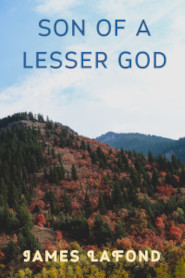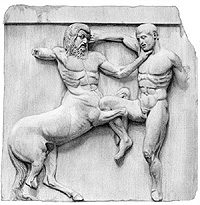This first part of Cover sets the stage for the Neanderthal extinction and does not seek to explain it, but set out the known moving parts that might bear on the discussion.
Dream Seeker, Part 2 will discuss the social dynamics of conquest.
Spear & Fang, Part 3 will discuss the physical dynamics of pre-industrial combat and apply these to the discussion of neanderthal extinction.
Cover is a discussion intended to support the Aryas project, to be included in Songs of Aryas, and as an appendix to Dream Eater, my second novelistic treatment of the Neanderthal extinction. The first, Beyond the Ember Star, was a time travel novel that focused on the physical and technological, rather than the social and biological difference in the races who fought for the icebound and ocean-girt land that would become Europe for tens of thousands of years.
The title Dream Eater, is based on Stan Gooch’s book Cities of Dreams, from the early 1990s, that posited that the larger Neanderthal brain, which was not apparently used for expanding technology as was the modern human brain, must have been used for something else, perhaps dreaming. This would not be the heat stroke resistant effect of the larger brain described by Marvin Harris in Our Kind, necessary for African hominids to run down game on the savanna until the ungulates died of heat stroke. It is a fact, that conditioned humans can run any animal to death over time, including canines, due in part to sweating, but also aided by a brain more resistant to heat stroke.
Gooch’s theory is supported by the lack of evidence among early modern humans engaging in religious ritual until after Neanderthal conquest. Further, those populations with Neanderthal DNA are responsible, on Planet Earth, for the development of all non-magratory exploration, all science, all theoretic thinking beyond folklore and myth, and conquered every non trace-Neanderthal nation upon this earth.
The peoples who settled most of the world and conquered the rest, have one genetic similarity, trace-Neanderthal DNA. All of these peoples were born in the Northern Hemisphere in Eurasia. This is not found in the people who only occupied a third of Africa until Malaysians introduced iron and the yam to East Africa. I suspect that this is symptomatic, not causal, that the trace of this other species of humans with larger brains, four times our strength and improved night vision and cold adaptation, reflects the vigor and adaptability of their conquerors, and within whose veins and myths a trace of their resistance yet remains.
Neanderthals resided in Europe and resisted modern human expansion in portions of Asia, the Near East and Eastern Europe for hundreds of thousands of years before they were replaced by our ancestors.
The extinction event occurred between 41,000 and 18,000 B.P., beginning with a robust Neanderthal population in Europe, whose ancestors had driven modern human aggressors from their haunts between 150,000 and 70,000 B.P.
Below I set out three categories of conditions:
-Environmental
-Physical
-Social [Part 2]
…
Environmental:
-E1. The start of a severe ice age circa 40,000 BP, and its maximum, about 20,000 BP, corresponded with the Neanderthal extinction. However, these people had thrived through numerous ice ages and were cold adapted and lived under better cover then neighboring modern humans who tended to reside in the flat lands and low lands
-E2. The Toba Super Eruption in Sumatra, caused a “nuclear winter” in 75,000 to 74,000 BP, severely reducing modern human genetic diversity and did not seem to effect Neanderthal. This is called The Bottleneck Event and most severely effected populations bordering the Indian Ocean. This possibly triggered an outward migration from the south in Africa and southeast in Asia towards Europe.
-E3. The Luschamp Magnetic Excursion Event, involving a reduction of electromagnetic field protection from solar and galactic radiation, occured in 41,000 BP. This event marks the beginning of mass extinctions, including mammals, plants and other organisms. This would make habitation at higher latitudes, higher elevations and in open country, more hazardous for mammals. We are now experiencing a magnetic excursion very similar to this 41,000 year old event.
…
Overview
What population is favored by each of these three conditions?
-E1. The start of a severe ice age, favors Neanderthals, who live in better cover, with more forests and caves to shelter and are cold adapted of extreme antiquity. Do note that animals, such as deer, elk, bison, with the latter two being plains animals, adapt to cold conditions, and to being hunted in their favored grassland habitat, by seeking forest and mountain cover. Europe had more forest and closer mountains, with the closeness of mountains enhancing cover in the places between.
The downside, over thousands of years, of seeking cover in the forests and valleys of Europe, was that the southward moving ice would reduce habitable land over time, adding southward pressure on the Eurasian extremity to that of the eastward pressure from invaders.
-E2. The Toba Super Eruption in Sumatra, had, as a legacy, eliminated the least adaptable modern humans who would invade, not from the south [Africa] but from the southeast and east, as indicated by the steady retreat of Neanderthals from Siberia and The Levant to their final enclave in Portugal over a 22,000 year period. [1]
-E3. The Luschamp Magnetic Excursion Event would seem to favor the Neanderthals based on the reasons given in E1. However, this event marks the beginning of their extinction, suggesting that the key mechanism was the pressure this event placed on modern humans to migrate to Europe. This mechanism has, as later analogues, the east to west Eurasian cultural displacement events that follow:
-Neolithic, Anatolian displacement of Cromagnon
-Bronze Age, Аrуаn conquest of Anatolian and Cromagnon
-Iron Age, displacement of legacy Аrуаn populations by Celtic Аrуаns
-Iron Age, Scythian, Germanic westward displacement of Celts
-Antiquity, Roman conquest of Celtic and Germanic tribes
-Late Antiquity, Аrуаn displacement by Huns
-Dark Ages, Germanic conquest of Roman and Celtic civilization
-Dark Ages, Arabic, Berber, [2] Turkic conquest of Аrуаns
-Middle Ages, Turkic and Tartar conquests of Аrуаns
-Middle Ages, Mongol conquest of Аrуаns
-Early Modern [1453-1697] Ottomon Turkic conquest of Аrуаns
This east to west Eurasian pattern persisted for ten thousand years and was only reversed my the modern European industrial war sciences of sail, canon, gun and bayonet. [This latter tool will be revisited in physical conditions.]
Overall, environmental conditions favored Neanderthal continuance in Europe. Do note that in North America, the greatest genetic disasters facing stone age Tribes, was what they suffered at the hands of more desperate tribes that were being pressured by the European invaders, specifically the Seminole extermination of the Timicun. [3]
…
Physical Conditions
-Neanderthals had larger brains. Scientists claim that their brains were of an inferior type, with no evidence cited other than their lack of an advanced tool kit. This lack of an expanding toolkit could have actually indicated a perfect adaptation to their environment. While the expanded toolkit of Cromagnon may have indicated a desperate measures to adapt to changing conditions, just as Christendom developed superior sailing methods due to being pushed to the very coasts of Europe by Islamic forces. [4]
-Neanderthals were stronger, favoring them in close combat
-Modern Humans were taller, favoring them in long range combat
-Neanderthals had night vision, favoring them in close combat
-Modern Humans had the ability to develop articulate verbal language due to throat structure, which favored them in our third category, social structure and over longer periods of time.
In terms of physical combat and ability to gain food hunting, it seems that Neanderthal and Cromagnon races should have settled along an environmental break line, with one under cover and the other in the open areas, just as the Anatolian and Cromagonon populations of Neolithic Europe would later do for some 1500 years until the Аrуаns conquered both. Indeed, the Cromagnons began as mammoth hunters on the plains and the Neanderthal as auroch hunters in forests and valleys.
Overall, the above evidence suggests that the racial advantage necessary to extermination must lie in the social question, even as the impetus to enter a cornered race’s homeland at a physical disadvantage must lie in a higher power—the environmental conditions. [5]
Part 2, Dream Seeker, will address the crucial question of the opposing social structures and discuss the social dynamic of the Neanderthal extinction.
Part 3, Spear & Fang, will discuss the military dynamics.
…
Notes
-1. Europe was effectively Cromagnon by 28,000 B.P., with the final trace population 10,000 years later at peak glaciation being crossbreeds hiding in caves overlooking an impassable sea in Portugal, Gibraltar, and I think a place in Italy. By this time Solutrean hunters of the Cromagnon type had already journeyed to what is now Maryland, establishing the ‘Clovis’ toolkit there, some of which included stone from France.
-2. only the Arabic and Berber invaders of Europe came from the south, but came east to west first
-3. The effect of Anglo-Аrуаn industrial pressure on tribes effected a cultural extinction, partially and in many cases in full, with the loss of must Amerindian languages. But the Iroquois, Seminole and Sioux, under European pressure and influence, exterminated, genetically, no less than 7 tribes. Combined Anglo-Lakota extermination, focusing on women and children, brought Black Hawk’s people from 15,000 to 129 persons, effectively a physical genocide.
-4. I have found out west, that not living under cover, being out in the open plains, brings weather events and temperature drops of a severity multiple times greater then in the forested east, and in a fraction of the time. The temperature variation in Cody Wyoming, in 8 minutes in September 2016 was 85 down to 38 degrees, a variation which takes an entire season in the east, when under cover. This mechanism, the harsh and dynamic environment of temperate grass lands, might explain why in Asia [from Аrуаns 2000 BC, to Mongols 1400 AD] and in North America [from pre-contact to Comanche to Lakota] why tribes from the plains and steppes have always driven weaker tribes into forests, in Europe from east to west, and in America from west to east, out of a do-or-die desperation to survive.
-5. The natural advantage of close combat over distant combat will be illuminated in Part 3.










